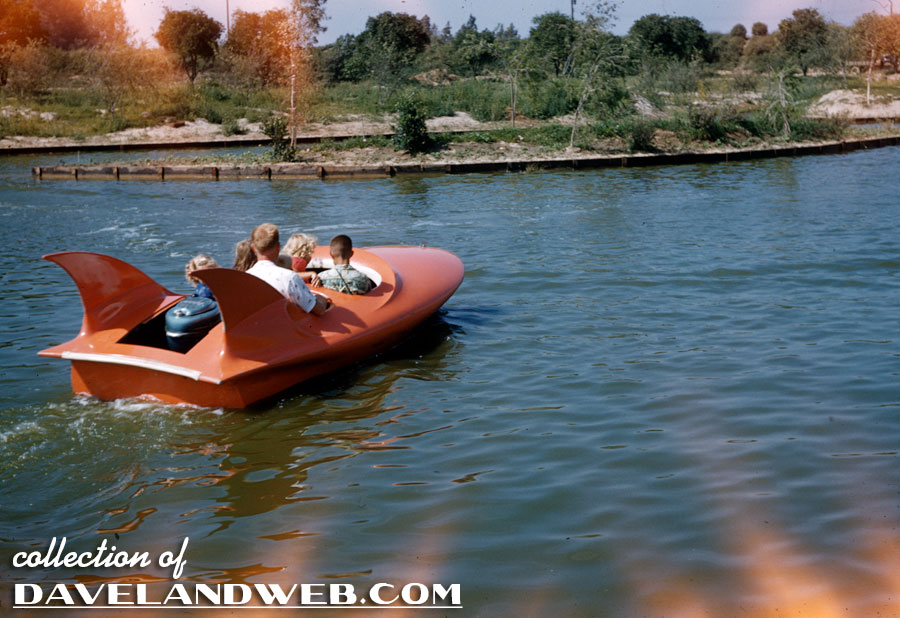
I had some good requests on where to go next on my Time Machine Journey Through Disneyland, but first, I felt the need to experience a bygone attraction...especially since I was nearby at the Circus. It may have been a snoozer, but I have always wanted to ride on one of these cool Batman-looking boats.
The Tomorrowland Boats opened on July 20, 1955 in the lagoon that would eventually be home to the Submarine Voyage attraction. Approximately one month later, they were renamed The Phantom Boats and redesigned with tailfins that were apparently a mechanical nightmare. They quickly got a bad rep for stranding guests in the lagoon. Ironically, in the 1955 Bank of America park guide, they were referred to as "Speedboat Rides"; as any of the handful of guests who experienced this attraction can tell you, there was nothing speedy about them.
There were a total of 14 gas-powered fiberglass marvels painted in bright colors, designed by Bruce Bushman. Poor mechanical design caused the motors to constantly overheat; every night the boats had to be rescued and repaired. “Pilots” for the boats were added to help the situation, but despite all the time and energy expended on them, the Phantom Boats received the dubious distinction of being the first permanent Disneyland attraction to be closed.
You know there's a problem when there are more cast members than guests!
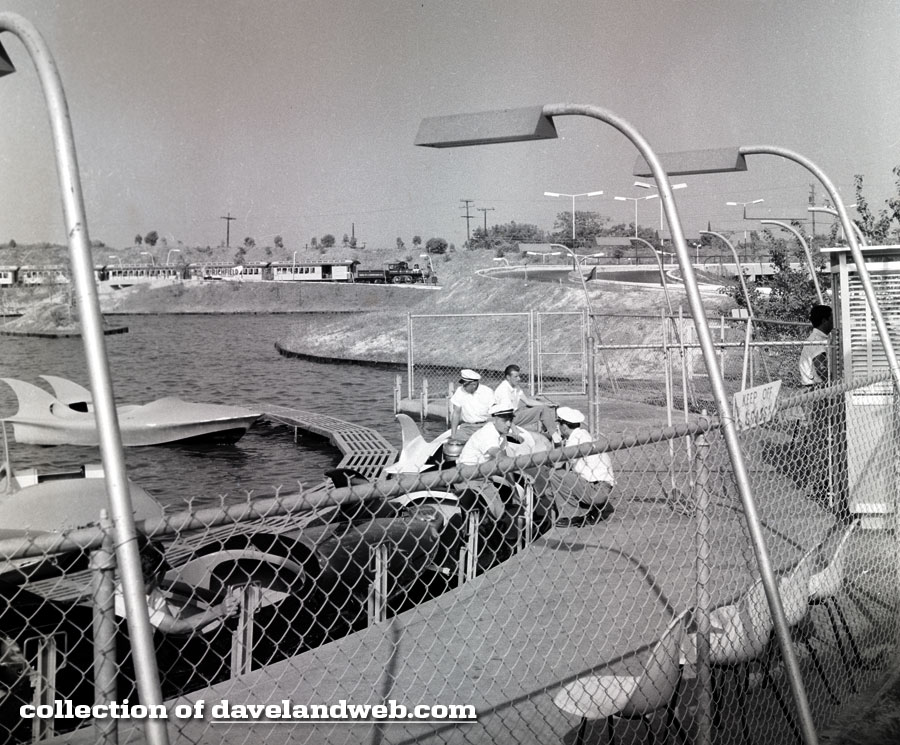
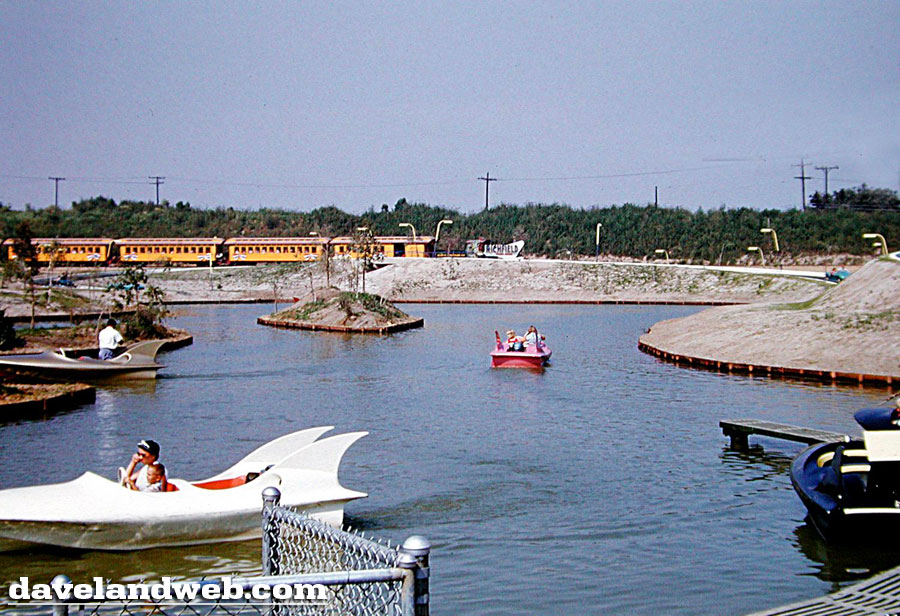
By the end of 1955, they were taken out of commission. There was a brief attempt to change the attraction to a Florida Everglades type “Airboat” (guests could even see signage proclaiming their June 2, 1956 opening). The new boat was built and even tested, but ultimately vetoed, so as a last resort, the Phantom Boats came back for one more chug around the lagoon in the summer of 1956, as you can see in the following photos:
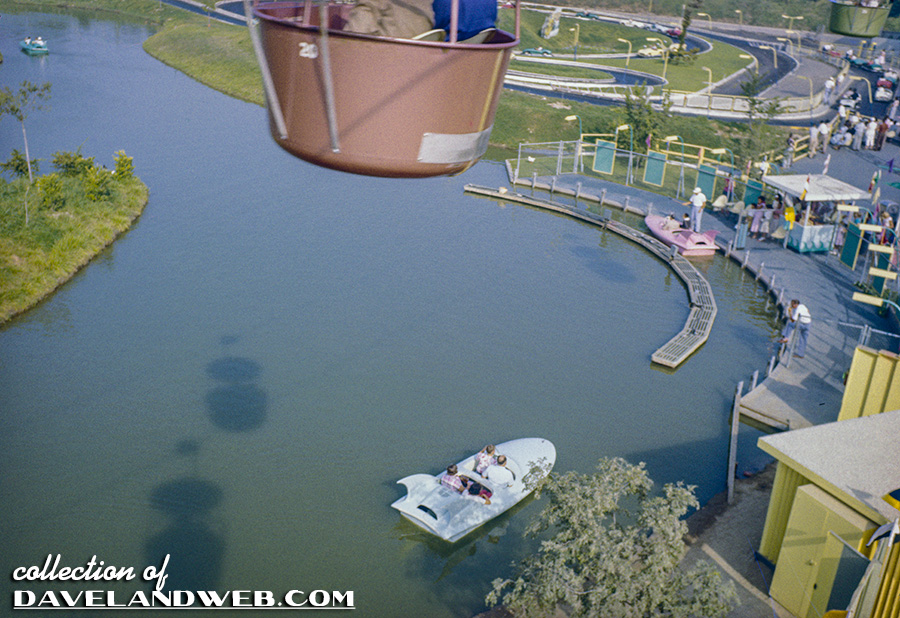
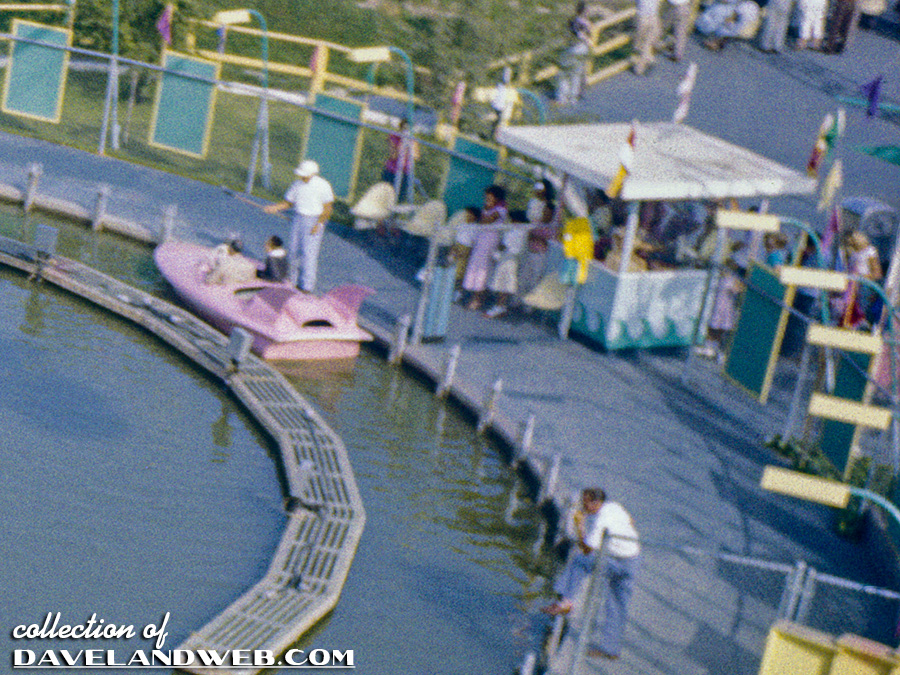
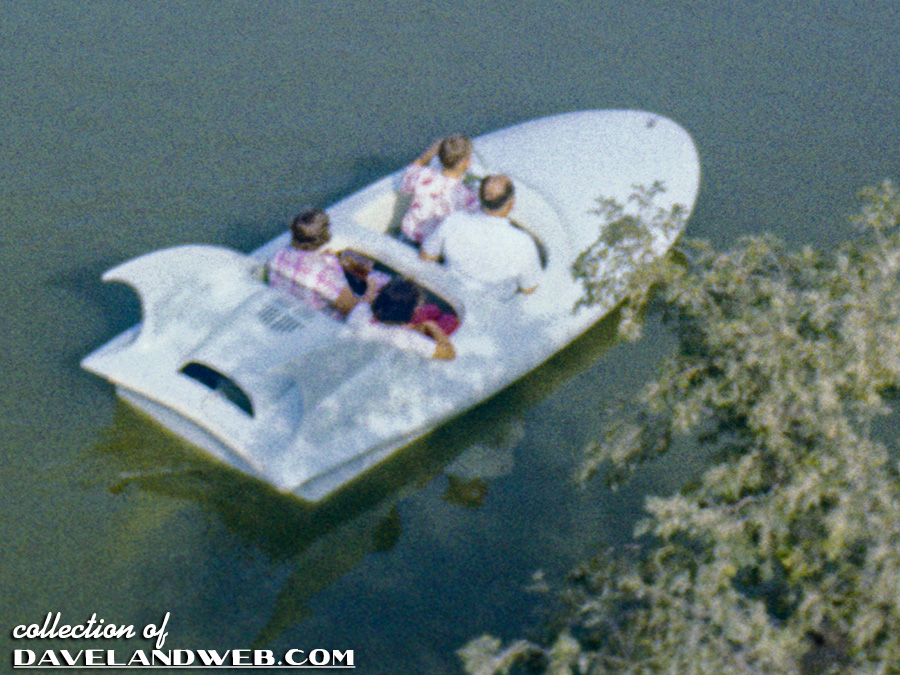
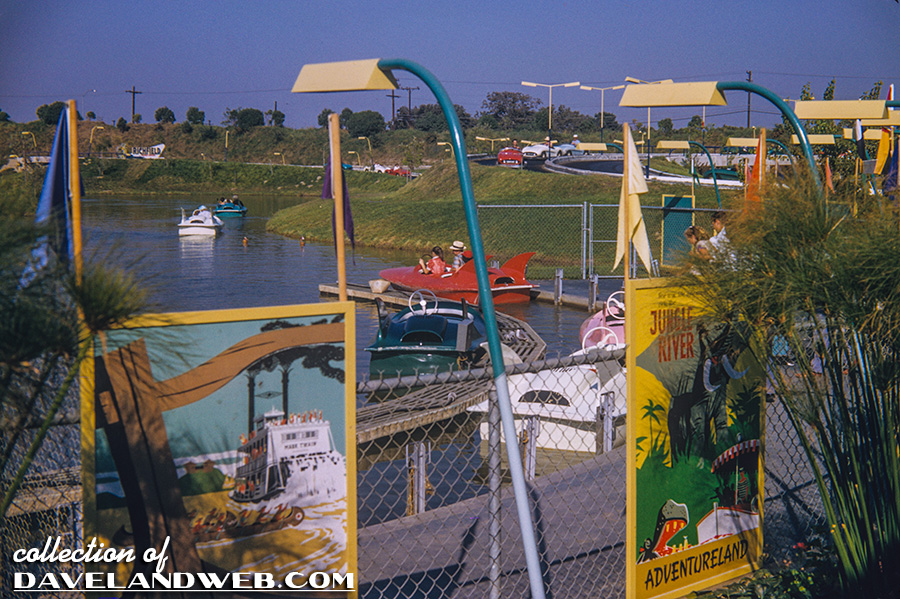
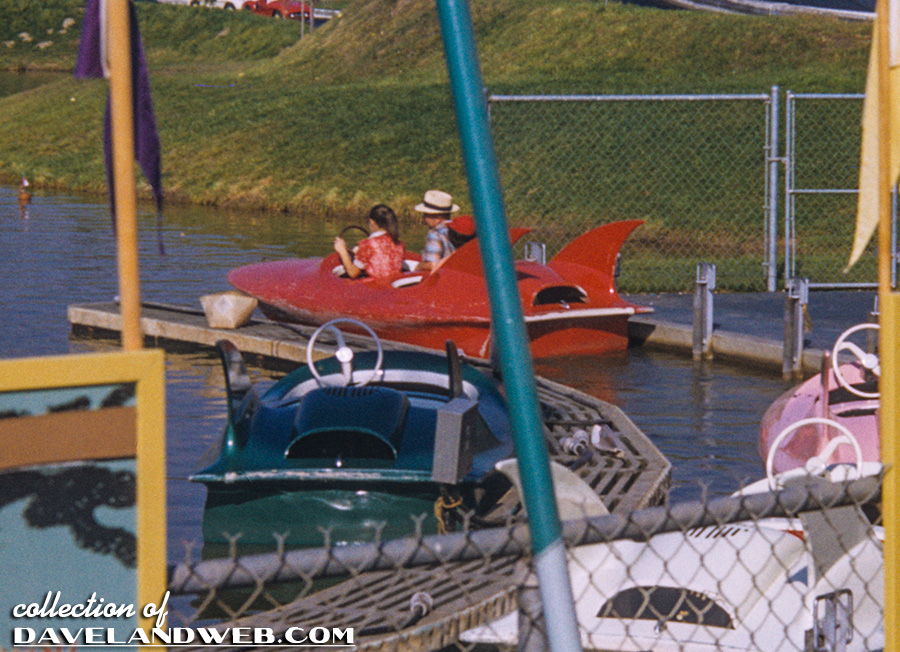
1957 marked the debut of “The Motor Boat Cruise” in a nearby lagoon, thus changing its zip code to Fantasyland. This very sedate “B” Ticket attraction took away any control that guests had over the boats by putting them on a track. No steering or acceleration (there goes all the fun!). Guests leisurely road around the Fantasyland lagoon while the Viewliner, Autopia, Monorail, and PeopleMover “sped” by (depending upon what year you were riding the boats of course!).
Don't these guests look bored? Without the fancy fins, I have lost all interest in riding these.
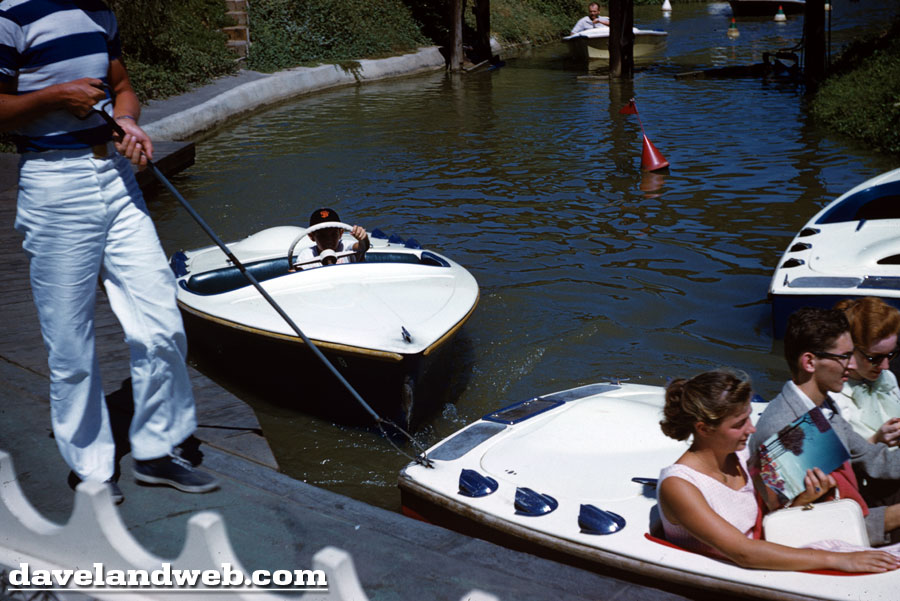
However, if I could just snatch that young lady's Sleeping Beauty Castle Diorama souvenir book...
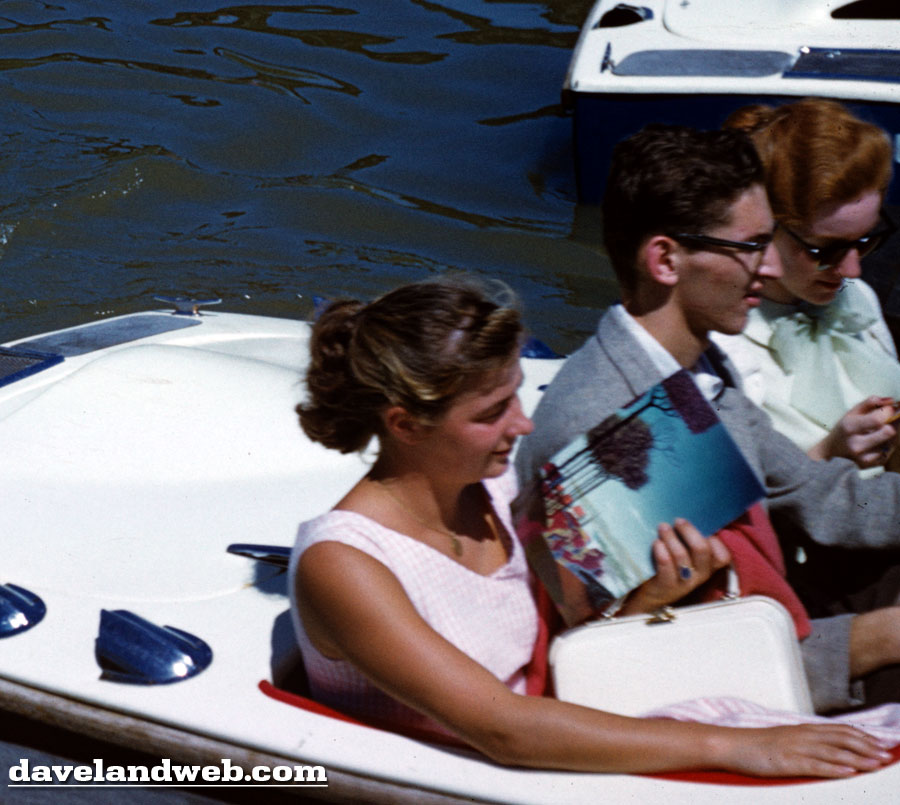
August 1959, the Monorail, Matterhorn, and Subs had all been added, making this attraction seem even more boring. I'm sure these ladies would rather be talking on their cell phones.
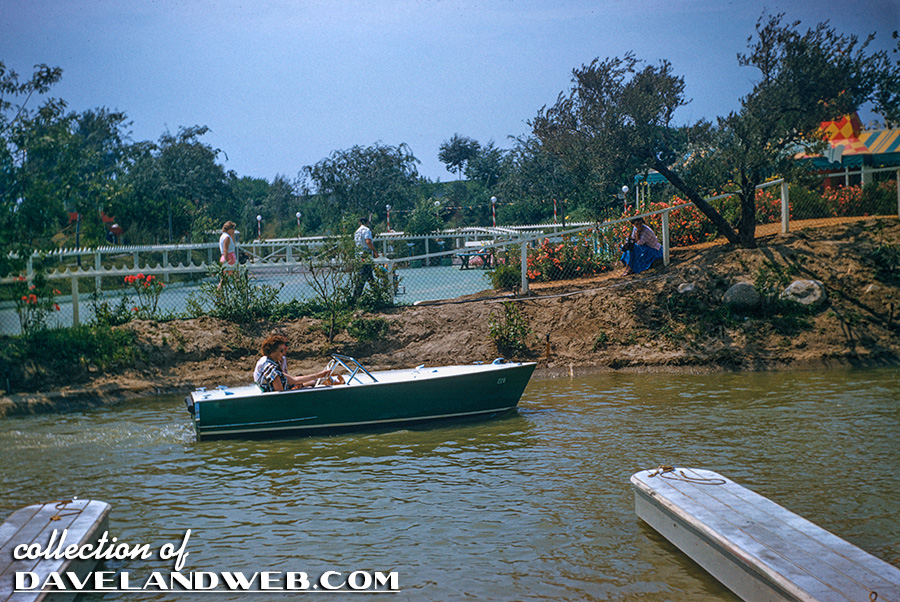
Zooming in you can see the original Fantasyland Train Depot:
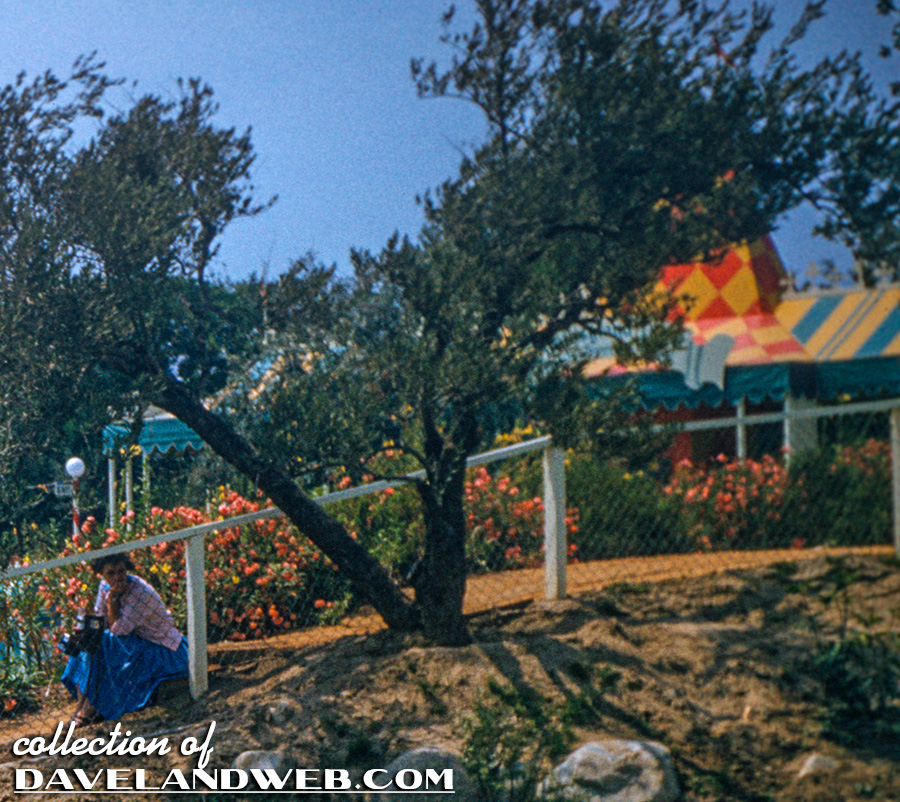
This is probably one of my very fave MBC photos, with the young boy wearing the fun red plastic shades:
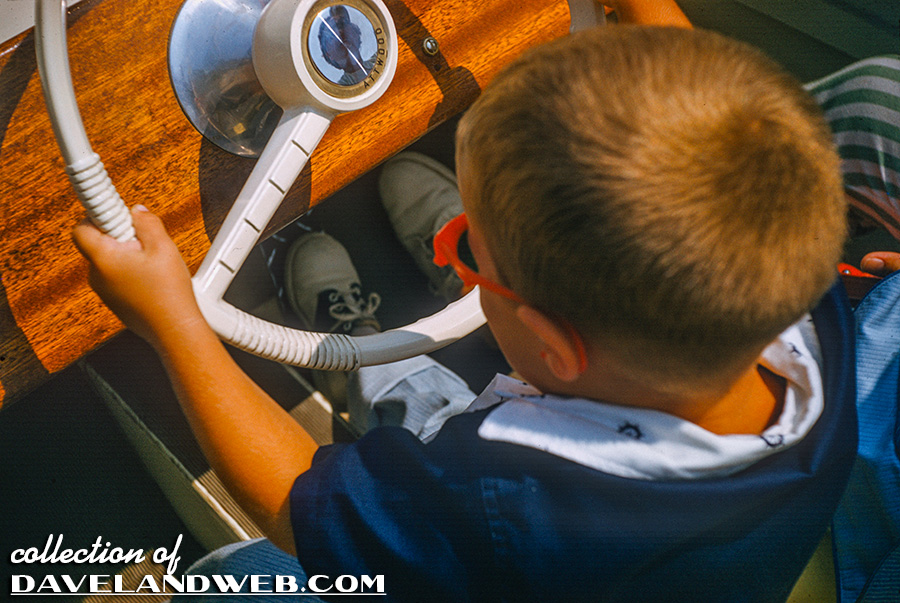
Here it is all in one glorious shot; Subs, Monorail, Moonliner, Skyway, and The Autopia. Now THAT'S a lot of action!
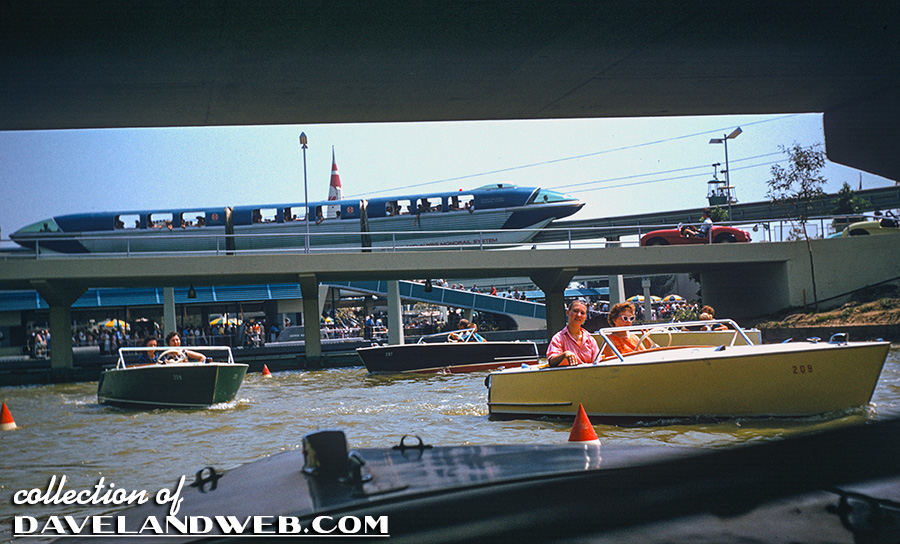
As a final bonus, John Waite, Disneyland Resort Alumni, was kind enough to share his memories of The Motor Boat Cruise attraction with me. John came to California in October 1955 and worked at the Disney Studio from January 1956 until Van France got him a job working for Milt Albright at the opening of Holidayland. Here is his story:
The Motor Boat Cruise – what memories! Back in 1957 I was a ride operator on the original Motor Boat Cruise. If you refer to old photos of Tomorrowland you will see the Motor Boat Cruise with the Viewliner train running along one side with the Midget Autopia across the way. At that time the ride had a curved covered (for the guests) loading area. The ride operators wore white sailor pants, white and blue stripped tee shirt and white captain’s cap. It was summer and very hot. There were two courses for the boats as in the later version that narrowed down to one channel through the loading area. The track system was different in that it consisted of two pipe rails for each channel except, as noted before, in the loading area. Under the boats there were three rollers – one at the bow and the other two at the back corners. These rollers when making contact with the pipe rails, kept the boats on track – sort of, as you will read later. The boats could actually be steered as there was enough space between the rails to allow a driver to turn the boat slightly. There was a large open water area at the back of the ride where the boats made a large circular turnaround, then they came back through the rock and rapids area as the later version did. Ride operators did not enjoy the luxury of the air controlled gates at each load position as the later version used. Instead, the ride operators had long aluminum poles with a wire cable loop at the end of it. The boat engines were always going and the operator would hook the loop over the cleat at the bow of the boat as it came into the station, follow it to the first open space, and through shear strength, stop the boat until the guests disembarked and the next riders were safely seated before unhooking the loop and letting the boat go on its way. As I recall there were underwater gates at the start and finish that would direct the boats alternately to Channel 1 or Channel 2. The loaders lined up on the dock to catch their boats and bring them to a stop. It took some strength to hold the boats during the load/unload process and new operators ended up with blistered hands until their hands toughened up. We felt in good shape with all the physical labor it took to run the ride. Now the plot thickens—what we found early on was that the guests had no idea how the boats were controlled under the murky water. Since there was a little steering between the rails, one guest would try to bump their buddy in the next lane. Of course he couldn’t do it, but steering against the rail slowed the boat down and if it was slowed long enough the next boat caught up to it and jammed the two boats together. If it was the outside channel we could usually reach it with the poles and pull the boats apart. However, if it was the inside channel or at the turnaround area, one of us would hand our wallet to another operator and jump into the water and wade out to the boats to separate them. This was fine on a hot summer day, and of course we would then have to go to Wardrobe to get a dry costume. This problem became quite common and we got permission to wear our wet costume until it dried out. If this problem happened back in the turnaround area, it presented another problem. This area was the deepest part of the ride. On me the water came up to my armpits. Now imagine a child in a boat that has suddenly stopped back there and then see a man jump into the water and approach them with only his head and shoulders visible. Usually our first job was to reassure the children that everything was all right and then go about separating the boats.. This problem seemed to get worse as the summer progressed. One of the operators was also a life guard. He asked if he could wear his swim trunks and stay in the water in that back area. He did that for several days until one day a water maintenance worker poured a water treatment chemical into the water and the life guard broke out with a rash. That ended us having an operator in the water all the time. Needless to say, the W.E.D. designers went to work to redesign the ride with a guide system similar to the one used in “It’s A Small World” attraction. At that point the guests could no longer steer their boats. Also the loading area was changed to two separate channels with air operated gates that held the boats during load/unload. This was much better for the ride operators, although the guests had enjoyed the ability to steer the boats in a limited way. The loading area and part of the channel layout is still visible across from the Matterhorn Bobsleds.
See more vintage Disneyland Motor Boat Cruise photos on my Motor Boat Cruise web page.

8 comments:
Excellent post and photos Dave! And thanks John for sharing your memories of this short-lived attraction.
And yet the "boring" Motor Boat Cruise lasted 36 years, longer than many E and D ticket attractions. I always thought it was a little like the Peoplemover (admittedly without the view) in that it was a low-key, wind-down, relaxing ride. You always approached it with low expectations and were always surprised at how pleasant it really was. Nuthin' fancy; just a nice little boat ride. Wisely, DL has always kept a few decaf rides in the mix.
I agree with HBG2, it was relaxing, plus it was a way to use up a "B" ticket. I think it would be great if they would make a return....but that's just me.
Didn't the later version of the boats have a acceleration pedal? I remember that we couldn't steer the boats, but for some reason I'm remembering a gas pedal.....or am I confusing them with the Autopia? Isn't the little kid with the red glasses pressing down on a pedal?
HBG2 & TokyoMagic - Very good point. For that matter, the Autopia is very sedate as well. They're on a track and they go pretty slow...and yet, the lines are always long for that attraction. I wonder why the Motor Boat Cruise didn't draw the crowds that the Autopia did?
Great post Dave.
Was there ever an attraction poster for The Phantom Boats?
I do not believe there ever was one; I do know that there was a billboard type ad done for the Everglade-style boats that never happened though.
I remember the motorboats from an early 60's trip, I think. Liked them a lot, because you felt like you were going somewhere.
I grew up in San Jose, where the county fair brought dull spinners and ghost trains that fitted inside a truck behind a deceptively big facade. The Santa Cruz Boardwalk had the Giant Dipper and the Cave Train (still going strong), but most of the other rides were just more robust spinners.
On Disneyland's motorboats, in contrast, you saw some scenery, passed some other attractions and were actually floating on a substantial body of water. Not in the same class as the Mark Twain or the Jungle Cruise, but a nice little taste of the basic magic behind those rides. Plus, you got your own steering wheel.
Were these gasoline or natural gas powered?
Post a Comment